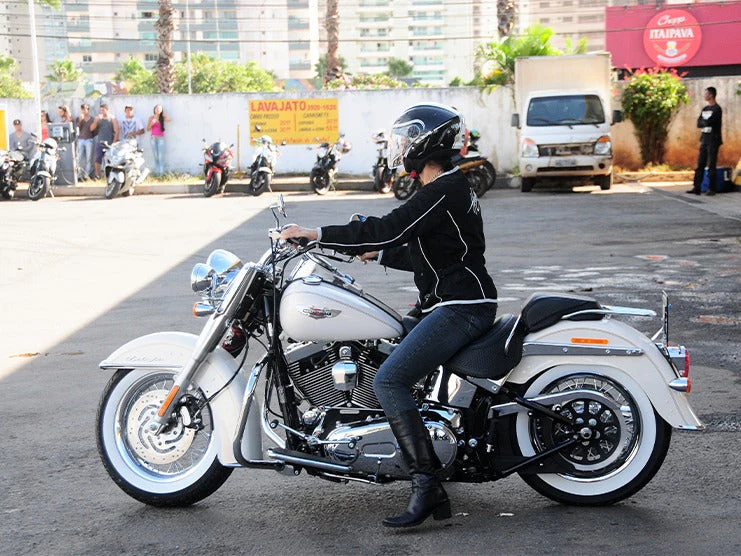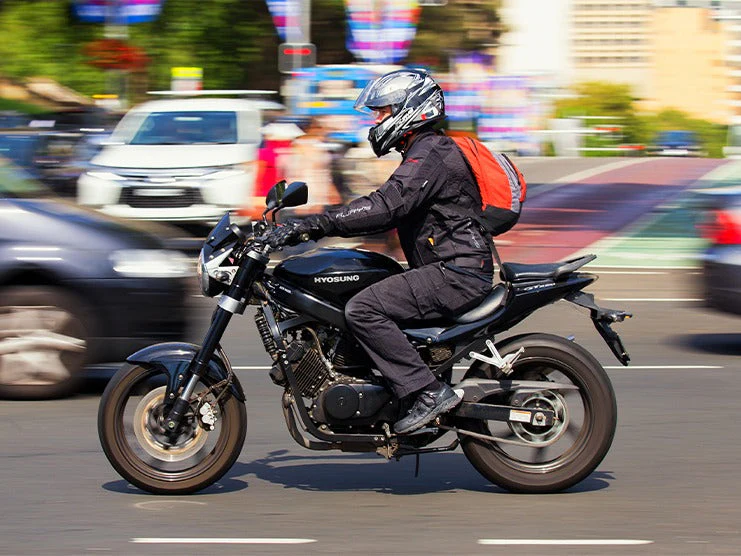People love to buy motorcycles as they are fun to ride. Buying a motorcycle should be as thrilling as your first ride. Since a motorcycle is a big investment, you need to be mindful when making your first purchase. Most people check online reviews and recommendations when picking a motorbike. However, there are other factors to consider before purchasing a bike. This article provides a complete guideline on how to try a motorcycle before buying.
Table of Content

1. How to Test a Motorcycle Before Buying
1.1 Sit on the Motorcycle
The easiest way to figure out whether a motorbike is right for you is to sit on the bike. Almost all dealers or private sellers should have no problem with this.
When seated on the motorbike, don't judge whether it fits if you still have one foot on the ground and the kickstand is down. A salesperson may hold the bike up for you by bracing the front wheel with his/her legs.
1.2 Test Ride
You will not know how well the motorbike handles until you take it for a test ride. A test ride gives you a chance to get a feel of the motorcycle’s performance and ergonomics.
Sadly, not many sellers will allow potential buyers to go on a test ride. Some may agree to a test ride in exchange for payment, which they will retain if you accidentally damage the vehicle. If you are lucky, you may meet a flexible seller who has no problems with a test ride.
1.3 Demo Ride
Manufacturers may offer test rides, allowing enthusiasts to try their models. However, these are rare events that often only feature the newest motorbike models.
Most demo rides are directed by representatives of a motorcycle brand. You can only take the motorcycle on a predetermined route, whether on rural roads or highways. You are not allowed to push the bike too hard during a test ride by pulling off tricks like wheelies. Depending on the event, you may only be able to ride on a single model for at least 20 minutes.
1.4 Dealership Test Ride
Many dealerships like Harley Davidson allow enthusiasts to take their demo bikes on test rides. Usually, a staff member will ride with you to ensure your safety. Rarely will you be allowed to ride on a highway, travel at speeds over 80 mph, or ride the bike for over three hours.
1.5 MOTORCYCLE RENTALS
You can also test a motorcycle before making a purchase to get a rental. You can rent the motorbike for a day and ride it for as long as you want. Motorcycle rentals have plenty of motorcycle models to choose from. Rent the one you want to buy and take it for a test ride to become familiar with its features.
2. Other Things to Consider
2.1 Cold Start
When turning on the ignition for the first time, make sure it's cold. Pay close attention to the sound of the engine and look for any signs of oil burning in the exhaust. The bike should not be warm before the ignition is turned on. Any issues with the engine will be easier to spot if the vehicle has a cold start. If the bike is warm before or during your examination, this could be an indication that the motorcycle is suffering from mechanical issues.
2.2 Check the Levers
Make sure the clutch and brake levers operate smoothly. If the brake lever is stiff and crushing your fingertips, this may indicate the brake lines are inflated. Make sure the levers are within reach and can be pulled without injuring you.
2.3 Check the Brakes
When you are out of the way of traffic, test the brakes by applying them gently until you come to a complete stop. Check the brakes and ABS to make sure they are working properly. If the brakes are not working, possible causes include thin or deformed disks, worn brake pads, inflated brake lines, and old braking fluid.
2.4 Check the Gears
Check how well the engine works at different gears and at both low and high rpm. Most motorcycles come with at least five gears.
2.5 Utilities
Your first motorbike should be appropriate for the distance, terrain, and riding style. For weekends spent in the mountains, you may want a two-wheeler like the Ducati Panigale V4 R. However, it may not be ideal for daily commuting. Ask yourself plenty of questions to help determine which motorcycle best suits your needs. Do you prefer cruising or cornering? Do you prefer highways or back roads? Take your time when figuring out the criteria of your ideal motorcycle.
2.6 Rev the Bike
After your motorcycle has warmed up, give it a small rev to check the engine and the throttle. When taking a motorcycle for a test ride, do not rev the engine too hard or you may risk damaging the motorbike.
2.7 Seat Height
When selecting a motorcycle, make sure it has the appropriate seat height. Make sure that the seat height can be adjusted if necessary, ensures a comfortable riding position, and allows you to rest both feet on the ground.
2.8 Bike Weight
Make sure your motorcycle is the appropriate weight to ensure easier handling when turning corners.
2.9 Bike Safety
Before buying a motorcycle, it is best to complete a Motorcycle Safety Foundation (MSF) course. Having learned safety education will ensure you know how to spot any incoming dangers and how to act in emergencies.
2.10 Bike Insurance
Before buying a motorcycle, make sure that you can afford insurance. Every state requires you to have some form of motorbike insurance to be considered legal to ride.
Motorcycle insurance provides financial protection in case of property damage or personal injury, due to an accident. Motorcycle insurance can also pay for medical expenses, theft, and other damages.
All riders are legally obligated to get at least liability coverage. Liability coverage includes protection for the following:
- Physical Harm Liability
- Property Damage Liability
2.11 Find What Suits You
The most common types of motorcycles are cruisers, sports, and standard bikes.
Sports bikes have longer handlebars, and higher footpegs, and are ideal for high-speed travel.
Naked or standard motorcycles are beginner-friendly vehicles with an upright riding position.
Cruisers are suited for taller riders as they have a more laid-back design. However, they can cause some discomfort due to their high handlebars and forward footpegs.
3. Last Words
Buying a motorcycle is an exciting experience for a rider. There are a few things to keep in mind when buying a motorcycle, such as comfort, utility, ergonomics, height, luggage, weight, levers, brakes, gears, etc. The best way to check a bike is by sitting on it or going on a short test, demo, or dealership ride. It is also essential to pick the type of motorcycle that best fits your riding style.













Leave a comment
All comments are moderated before being published.
This site is protected by hCaptcha and the hCaptcha Privacy Policy and Terms of Service apply.